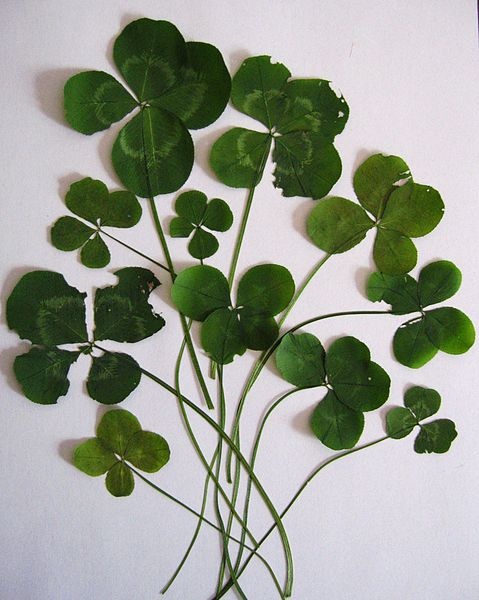On the day that shows off the three-leafed clover — the St. Patrick’s Day’s shamrock — what are the odds of finding a lucky four-leafed one? It’s harder than you think.
First of all you have to find clover. Clover used to be common in every lawn because it was mixed with grass seed to provide natural fertilizer for the grass. But now clover is absent because lawn care products poison all broad-leafed plants. Clover is broad-leafed so it dies, too. No luck for the folks with “perfect” lawns!
Then you have to find the odd ball four-leafed mutation among a sea of three-leafed plants. On white clover (Trifolium repens) there are usually three leaflets per leaf. (That’s one leaf on the stem). But sometimes there’s a mutation and a recessive gene expresses into four. What luck! Even rarer and luckier, five leaflets.
On your first hunt through the clover patch, you have a 1 in 10,000 chance of finding a four-leafed clover and a 1 in a million chance of finding the five-leafed variety, according the Minitab statistics blog. In other words, you’re lucky to find one. If you do, mark the spot because more lucky leaves are likely to appear on that plant.
Looking for four-leafed clovers today in March’s still-brown grass may be a challenge but here are some tips to help you search.
And save yourself some time. Don’t look for luck in a perfect lawn.
(photo from Wikimedia Commons, CC by SA 3.0. Click on the image to see the original)

My late mother-in-law could find a four leaf clover in almost every patch she examined. She was amazing!
I find them all the time….just look down and there they are….the most leaved one I found was 15….I found over a 1000 when I was pregnant with Dana…and many more than 4